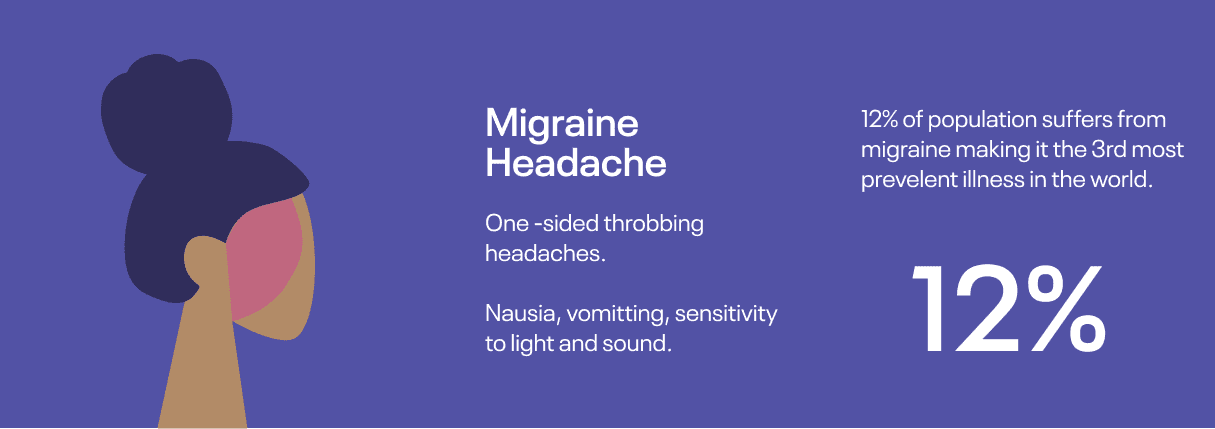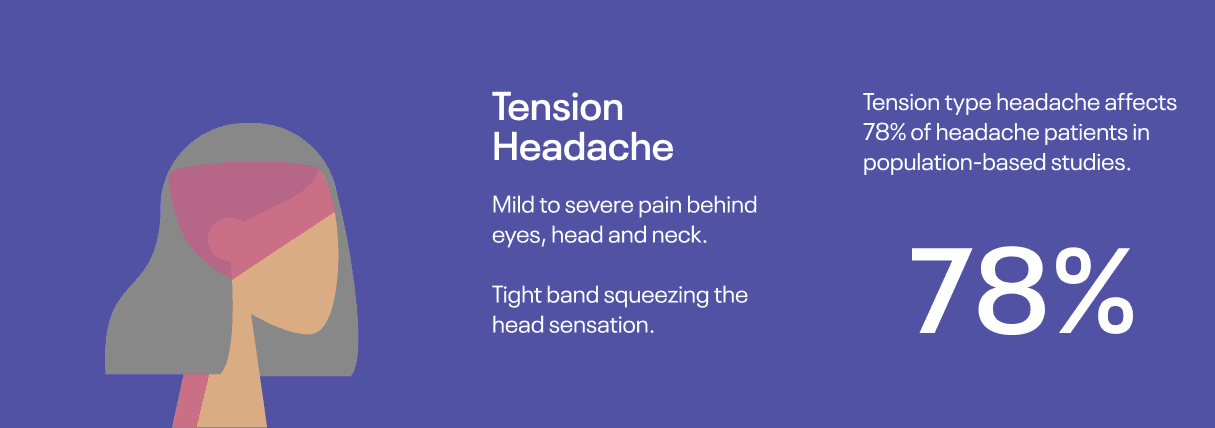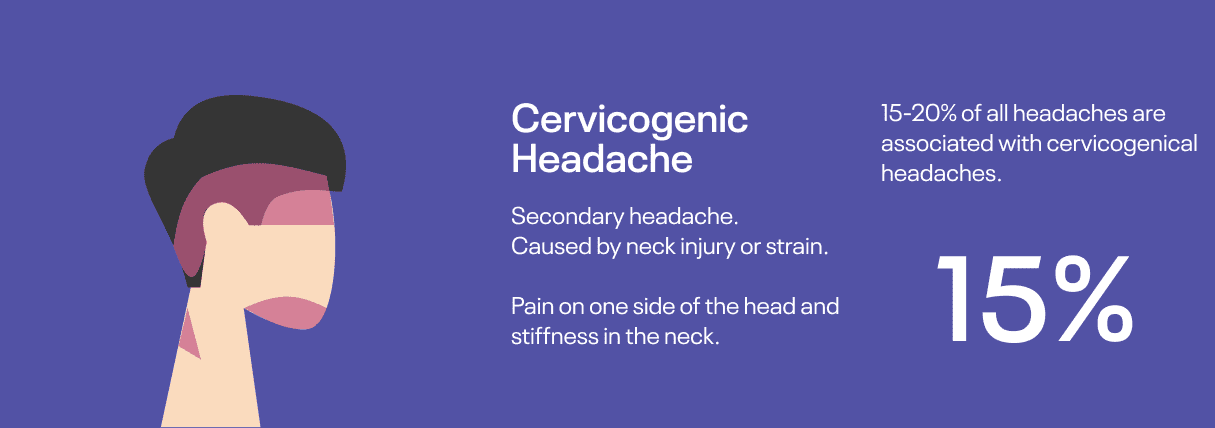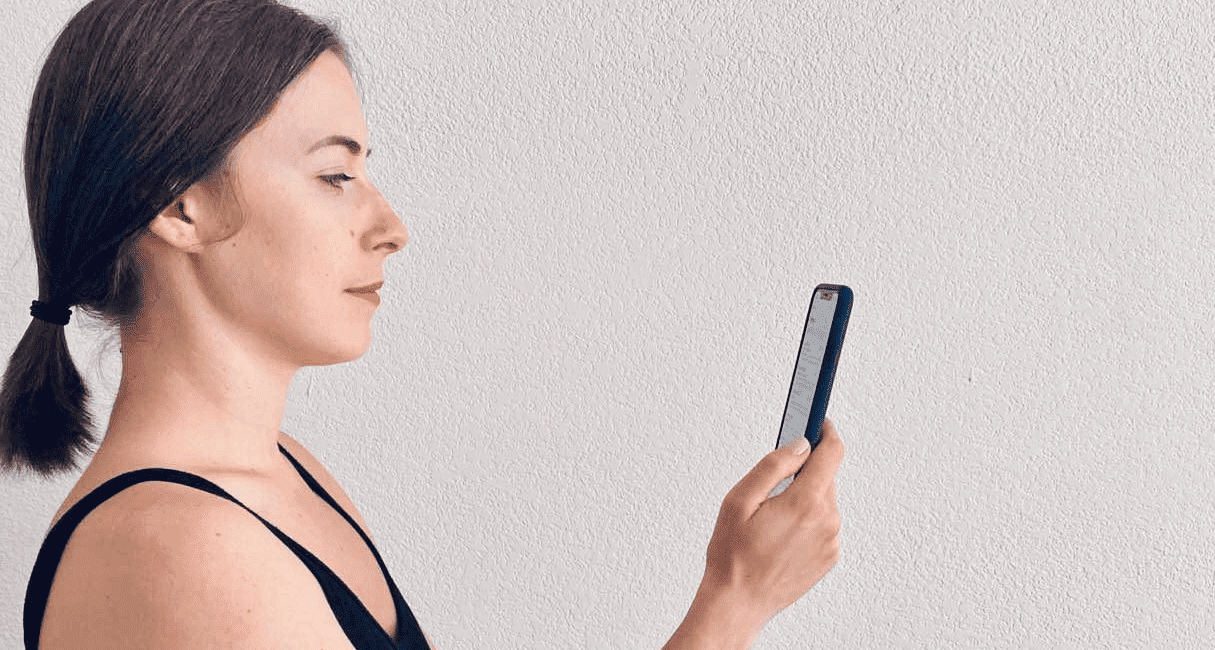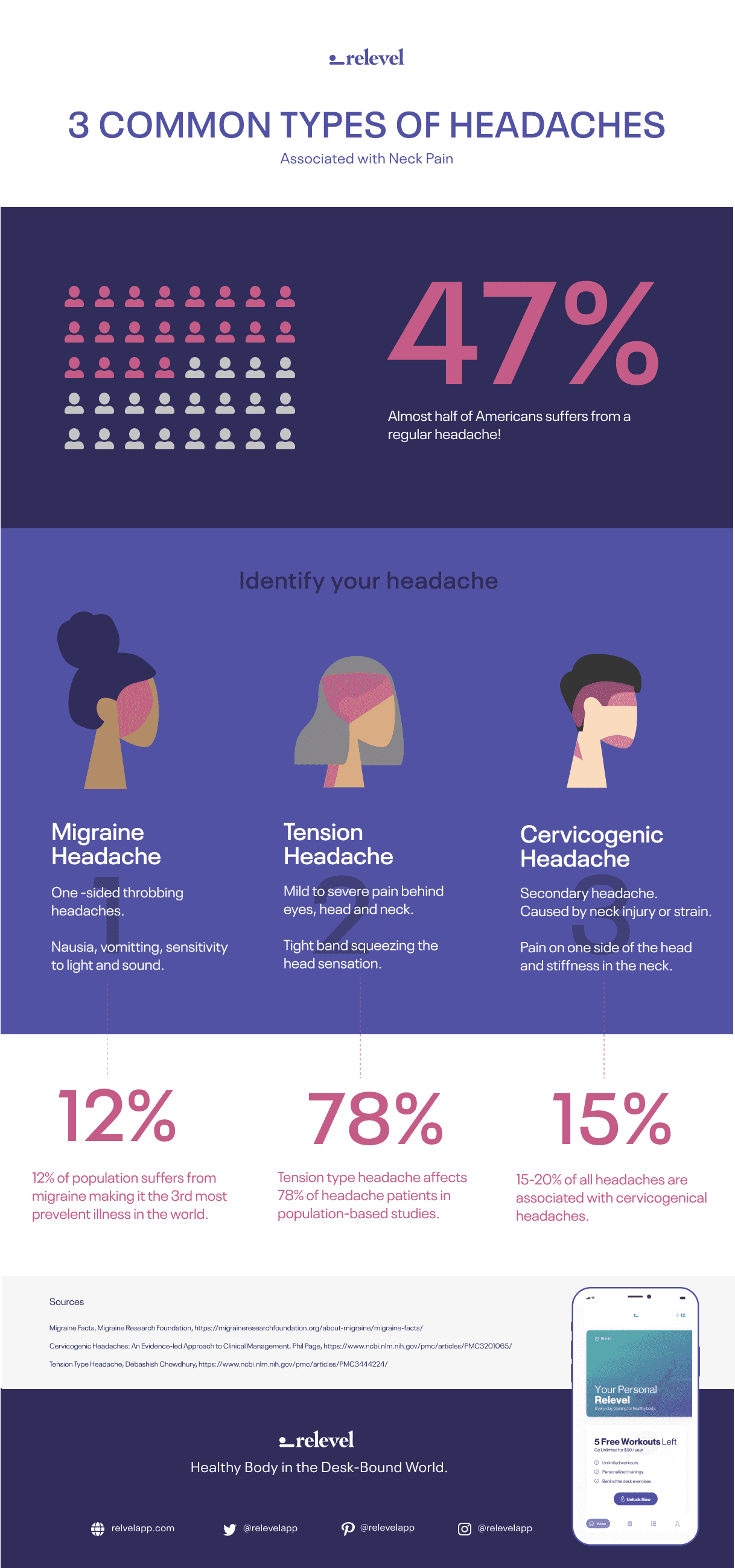5 Steps to a Quick Posture Fix for Neck Pain and Headache.
Fact: bad posture can cause headaches. Fact 2: neck pain and headache are often married- meaning one can trigger another.
Neck pain and headache are very common complaints in our modern-day desk-bound world. As many as 47% of Americans suffer from a regular headache. We spend hours craning the neck in front of our computers, and after we step away from the workstation, we take that bad posture with us. We switch from computer to smartphone to driving to house chores- all with our ever-present forward head position. This repetitive postural abnormality causes a lot of tension in the upper back and neck muscles.
Wouldn’t it be nice to fix your posture and avoid the unpleasant neck pain and headaches?
In this article, I’m going to write about why do we experience these throbbing headaches and why it is crucial to keep the position of your head in mind (pun intended!). I’m also going to give you a few examples of how you can fix your posture with a few simple techniques. So read on.
What Are the Common Types and Causes of Neck Pain and Headaches
There are many reasons why you might be suffering from a headache or neck pain or both.
The three most common types of headaches are:
1 Migraine Headaches
2 Tension Headaches
3 Cervicogenic Headaches
-
Migraine Headaches
This is a neurological condition that can cause multiple symptoms. Migraines are identified by throbbing headaches often followed by nausea, vomiting, or sensitivity to light and sound. Migraine headaches are often hereditary and affect women more frequently than men.
According to Spine-Health, out of the 12% of the population experiencing migraines headaches, nearly half complain about neck pain before and/ or during the episode of migraine.
-
Tension Headaches
These are the most common types of headaches. Tension headaches are often described as mild to severe pain behind the eyes and in the head and neck. They are closely associated with the tightness of the neck and head muscles.
Emotional stress, poor posture, and sedentary lifestyle are huge contributors to tension headaches.
-
Cervicogenic Headaches
They are secondary headaches. Secondary means that they are caused by underlying conditions. According to Medical News Today, conditions include neck injuries, structural problems in the neck, or constant strain on the neck due to the nature of one's job, for example, office workers, hairstylists, or manual labor.
The cervicogenic headaches originate in the neck and radiate towards the head. These headaches are often associated with pain on one side of the head and stiffness in the neck.
Now that we have an overview of different types of headaches and neck pains, let's further explore those associated with an abnormal head posture.
Why Does Forward Head Position Causes Neck Pain and Headache
Your head position in space hugely impacts your posture. In the ideal scenario, your head should sit vertically on top of the spine with the ear lobes on top of your shoulders.
Why Is Your Head Position Important?
Do you know that your head weighs about 12 pounds (5.4kg)? That doesn’t sound too heavy, BUT do you know that the more forward it leans, the heavier it is? With every inch, it moves out if its neutral alignment the weight increases by about 10 pounds (4.5kg). When misaligned, your head weight can even feel like 60 pounds (27kg). It is about five times as much as optimal!
How Can Forward Head Posture Cause Neck Pains
Craning your neck affects the muscles of your upper back, neck, and head. The imbalance you create by holding your head out of its optimal alignment causes one side of the body to become tight while the other side becomes overstretched.
Ortopedic and Balance Therapy states that:
Imbalance in the muscles and strength is a leading cause of injury.
The muscles that are continuously held long are overworking to counterbalance the weight of your head coming out of its desired position. The musculature of the base of your skull becomes tight, and as a result, causes headaches and neck pain.
How the Head Position Impacts the Rest of Your Body
The head coming out of its alignment causes your shoulder to round forward, which tightens up your chest muscles. In the long term, your upper back becomes hunched. The lousy posture continues down your spine and eventually affects your lower back.
Quick Posture Fix
Currently, there are a lot of devices on a market that coach you about your spine position. That is great! However, if your upper back muscles aren’t mobile and strong enough, your neck will keep craning over and over again no matter how many gadgets you use.
So here is a quick fix of our seated posture that you can start applying right away!
-
Sit right on top of your sits bones
Look at your posture globally. Start at the base of your spine. The moment you tuck your tail under, you are causing your back to round. It is harder to keep your head in its neutral alignment when your spine is in the „C shape.” So you want your head to stay more easily in the correct alignment? Untuck your tail and sit pretty.
-
Find a neutral head position
Experience your extremes. How does it feel to move your head too far forward? How does it feel to tuck it far back? Find your neutral in between these extremes.
-
Practice chin nods
One of the best exercises to help you stretch the neck and at the same time, find a correct head position. Your chin nods are not only good exercises to relieve the neck and head tension but could be used as a safe practice to look down and up without over engaging your neck muscles. Need to look up or down? Hinge!
-
Take your shoulders back and down
Your shoulders tend to round forward following the pattern of your head. Fix their position by taking them back and down away from the ears. On top of that, try this side-lying rotation to open up the chest
-
Keep things at the eye level
Okay, the screens are ever-present, and we won’t get rid of them, but for once, we can set them at the eye level to ease your neck and shoulders.
How to Maintain the Good Posture
Taking little steps to fix your posture at the workstation is essential and has an excellent long term effect on your body. Make sure you maintain a good posture outside your desk.
To enhance the positive effects of the quick fix techniques listed above, try implementing these extra steps:
-
Take a 15-minute break to RELEVEL your body
Keeping up with a well-designed personalized workout routine is essential in preventing headaches and neck pain. Just a 15-minute break can be helpful in aligning your body.
-
Stretch your neck and shoulders
Stiff muscles are not going to be able to hold your position for too long. See how you can mobilize and stretch your upper back for the best assistance. (Pain from the neck to shoulder. Fight it off with these five stretches at your desk.)
-
Get a professional massage
Muscles that are often involved in headaches are:
- Trapezius muscles, in particular, upper and middle fibers
- Scalenes
- Sternocleidomastoid (SCM)
- Sub-occipitals
- Splenius Cervicis
Show this list to your massage therapist, and they can work wonders in releasing the tension headaches.
-
Self- massage the base of your skull
This is one of the areas in our body that gets very tight. Tightness in the area may cause tension headaches. If you feel thumping pain in your temples or front or top of the head, give yourself a 2-3 minute massage. Use yoga tune-up balls, or stick two tennis balls in a sock and lie down on them.
Move your head side to side, up and down, or simply melt into the balls to alleviate the pain.
-
Optimize your work station
Lastly, if your workstation isn’t ergonomic, you are going to be straining your body to adjust to an incorrect setup desk, chair, and monitor.
Read how you can set up a standing and sitting workstation to avoid the aches.
Be Patient and Consistent
To see an improvement might take some time, be patient. Think, how many years did you spend in this lousy posture? It won’t change overnight, but if you are persistent and stick to your routine, your posture will improve!
If your headaches are persistent, check with your doctors are they could be a sign of a more serious underlying condition.
Stay healthy and remember just 15 minutes a day Relevel can help you keep your body ache-free!
